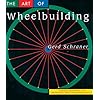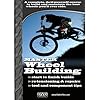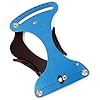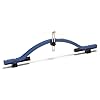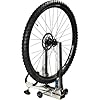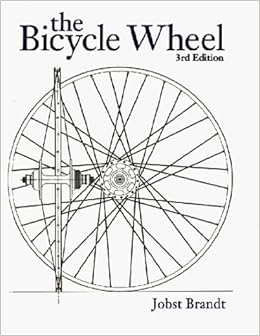

Flip to back
Flip to front

The Bicycle Wheel 3rd Edition Hardcover – January 1, 1993

$18.72
FREE Shipping on orders over $35.
In Stock.
Ships from and sold by Amazon.com.
Gift-wrap available.
NO_CONTENT_IN_FEATURE
Tell the Publisher!
I'd like to read this book on Kindle
Don't have a Kindle? Get your Kindle here, or download a FREE Kindle Reading App.
I'd like to read this book on Kindle
Don't have a Kindle? Get your Kindle here, or download a FREE Kindle Reading App.
Best Books of the Month
Want to know our Editors' picks for the best books of the month? Browse Best Books of the Month, featuring our favorite new books in more than a dozen categories.
Want to know our Editors' picks for the best books of the month? Browse Best Books of the Month, featuring our favorite new books in more than a dozen categories.
Product Details
Would you like to update product info or give feedback on images?.
|
Customer Reviews
Most Helpful Customer Reviews
106 of 109 people found the following review helpful
By
John S. Allen
on June 8, 2005
Format: Hardcover
3 Comments
Sending feedback...
Unlike some reviewers who would like to see Brandt describe and bless novel spoking patterns, I concur with his recommendation of traditional spoking. The traditional tangent tension-spoked wheel is one of the most elegant and efficient structures ever devised. A wheelbuilder may choose a rim, hub and spokes at will and so, construct wheels of many kinds that are not available commercially. With skill and care, an amateur may build wheels of professional quality. The traditional wheel may be built to the desired degree of ruggedness vs. weight, and if damaged, can often be made usable with an emergency repair or adjustment.
Brandt's advice faces challenges from within the bicycle industry, which is always looking for a new selling point. Wheels with low spoke counts, trendy now (2006) are more tolerable with deep-section aero rims than with shallow rims and can make sense for racers, who are willing to sacrifice reliability for a very slight increase in performance -- but for most bicyclists, it is much more important not to get stranded or crash than to increase speed by half a percent.
Some of the newer types of wheels may sell because they look different, but provide little actual advantage. Wheels with thick aluminum or polycarbonate spokes decrease weight slightly but at a major expense in air drag. Carbon-fiber spokes have a very poor record of reliability and safety, though carbon-fiber-epoxy composite material has been used successfully in rims and in single-piece formed wheels. Still, brake shoes wear carbon-fiber-epoxy quickly, so a metal braking surface is preferable. Don't get me talking about paired spokes, which make a wheel look as if it has fewer spokes -- but require a heavier rim, because longer rim segments are unsupported.Read more ›
Brandt's advice faces challenges from within the bicycle industry, which is always looking for a new selling point. Wheels with low spoke counts, trendy now (2006) are more tolerable with deep-section aero rims than with shallow rims and can make sense for racers, who are willing to sacrifice reliability for a very slight increase in performance -- but for most bicyclists, it is much more important not to get stranded or crash than to increase speed by half a percent.
Some of the newer types of wheels may sell because they look different, but provide little actual advantage. Wheels with thick aluminum or polycarbonate spokes decrease weight slightly but at a major expense in air drag. Carbon-fiber spokes have a very poor record of reliability and safety, though carbon-fiber-epoxy composite material has been used successfully in rims and in single-piece formed wheels. Still, brake shoes wear carbon-fiber-epoxy quickly, so a metal braking surface is preferable. Don't get me talking about paired spokes, which make a wheel look as if it has fewer spokes -- but require a heavier rim, because longer rim segments are unsupported.Read more ›
Thank you for your feedback.
If this review is inappropriate, please let us know.
Sorry, we failed to record your vote. Please try again
72 of 74 people found the following review helpful
By
A Customer
on August 14, 1997
Format: Hardcover
Comment
Sending feedback...
Jobst Brandt is an engineer who has been a consultant to the bicycle industry for many years, having been involved in the creation of Avocet's line of road tires, among other products. Those who have corresponded with him or read his posts on rec.bicycling know him as an opinionated, seemingly gruff fellow who does not suffer fools lightly. Quite a reputation.
But what Jobst is probably best known for is this book, The Bicycle Wheel. In it, he demolishes myths, and gives actual engineering data to support his contentions about bicycle wheels materials and construction. He tells you why butted spokes are better and longer lasting than straight gauge spokes, and why tying and soldering spokes doesn't make a wheel any stronger (and why it was nonetheless a useful thing for track racers to do). He explains why radial spoking doesn't really make for a rougher ride, as some claim, and he gives actual figures on elongation and strain to back up his claims And he teaches you how to build good bicycle wheels, too.
This is a book for any serious bicycle rider. If you choose to build your own wheels, Brandt will teach you to that. If you buy your wheels, Brandt will teach you to spec and maintain them. And if you're simply interested in better understanding the function and physics of bicycle wheels, he'll teach you that as well. Not a bad deal for one small volume.
But what Jobst is probably best known for is this book, The Bicycle Wheel. In it, he demolishes myths, and gives actual engineering data to support his contentions about bicycle wheels materials and construction. He tells you why butted spokes are better and longer lasting than straight gauge spokes, and why tying and soldering spokes doesn't make a wheel any stronger (and why it was nonetheless a useful thing for track racers to do). He explains why radial spoking doesn't really make for a rougher ride, as some claim, and he gives actual figures on elongation and strain to back up his claims And he teaches you how to build good bicycle wheels, too.
This is a book for any serious bicycle rider. If you choose to build your own wheels, Brandt will teach you to that. If you buy your wheels, Brandt will teach you to spec and maintain them. And if you're simply interested in better understanding the function and physics of bicycle wheels, he'll teach you that as well. Not a bad deal for one small volume.
Thank you for your feedback.
If this review is inappropriate, please let us know.
Sorry, we failed to record your vote. Please try again
28 of 30 people found the following review helpful
By
Kurt Klappenbach
on July 18, 2000
Format: Hardcover
Comment
Sending feedback...
I have been using Mr. Brandt's book for 19 years now (since its first edition in 1981). It is invaluable. Concise, clearly written. It debunks myths and makes the seemingly complicated matter of the bicycle wheel easy to understand and not intimidating at all. Maintain, repair, rebuild or build new wheels. The results are perfect. Ride without fear. Have pride in what you have done and show it off to others.
Thank you for your feedback.
If this review is inappropriate, please let us know.
Sorry, we failed to record your vote. Please try again
54 of 64 people found the following review helpful
By
John H. Henderson
VINE VOICE on September 4, 2001
Format: Hardcover
Verified Purchase
1 Comment
Sending feedback...
After having researched cycling for several months, it appears that The Bicycle Wheel by Jobst Brandt is considered to be THE standard reference on bicycle wheel building.
This book discusses how the wheel works, forces on the wheel, materials and designs of rims, spokes and hubs, truing, repair, and wheel building.
The book itself is nicely bound and printed, with extremely clear diagrams. Space is left on pages when necessary to ensure that the text doesn't get ahead of the figures, which can be rather annoying in something like a repair book.
For the most part, I am glad to have purchased this book, but was disappointed to find that a lot of the information in the book, such as wheel truing, materials, component design, and wheel building of a conventional 3-cross wheel, can be gleaned from the internet from such sites as those of Sheldon Brown. Some of the chapters in this book, such as the results of a finite element model analysis of the forces in a wheel, seem to be more unique to this book. Moroever, it is difficult to lay the computer down on the floor next to the wheel that you're building to guide you step-by-step, and the book had better illustrations than those I've seen on the web. Also, the information I mention above seems scattered around the internet, and this book brings them together in one reference.
For those who are expecting that The Bicycle Wheel will lead them to build exotic designs with the latest materials and lacing patterns, you will be disappointed. The author is a staunch believer that the bicycle wheel has been nearly perfected in the 3-cross lacing pattern with steel, cylindrical spokes, and that any "improvements" result in very minimal performance increase at the expense of stength.Read more ›
This book discusses how the wheel works, forces on the wheel, materials and designs of rims, spokes and hubs, truing, repair, and wheel building.
The book itself is nicely bound and printed, with extremely clear diagrams. Space is left on pages when necessary to ensure that the text doesn't get ahead of the figures, which can be rather annoying in something like a repair book.
For the most part, I am glad to have purchased this book, but was disappointed to find that a lot of the information in the book, such as wheel truing, materials, component design, and wheel building of a conventional 3-cross wheel, can be gleaned from the internet from such sites as those of Sheldon Brown. Some of the chapters in this book, such as the results of a finite element model analysis of the forces in a wheel, seem to be more unique to this book. Moroever, it is difficult to lay the computer down on the floor next to the wheel that you're building to guide you step-by-step, and the book had better illustrations than those I've seen on the web. Also, the information I mention above seems scattered around the internet, and this book brings them together in one reference.
For those who are expecting that The Bicycle Wheel will lead them to build exotic designs with the latest materials and lacing patterns, you will be disappointed. The author is a staunch believer that the bicycle wheel has been nearly perfected in the 3-cross lacing pattern with steel, cylindrical spokes, and that any "improvements" result in very minimal performance increase at the expense of stength.Read more ›
Thank you for your feedback.
If this review is inappropriate, please let us know.
Sorry, we failed to record your vote. Please try again
